2015-2022 Trainees
Trainees listed here entered the program in the years indicated.
- 2022 Trainees
- 2021 Trainees
- 2020 Trainees
- 2019 Trainees
- 2018 Trainees
- 2017 Trainees
- 2016 Trainees
- 2015 Trainees
2022 Trainees
Julianna Bourgeois
PhD Adviser: Chad Mirkin
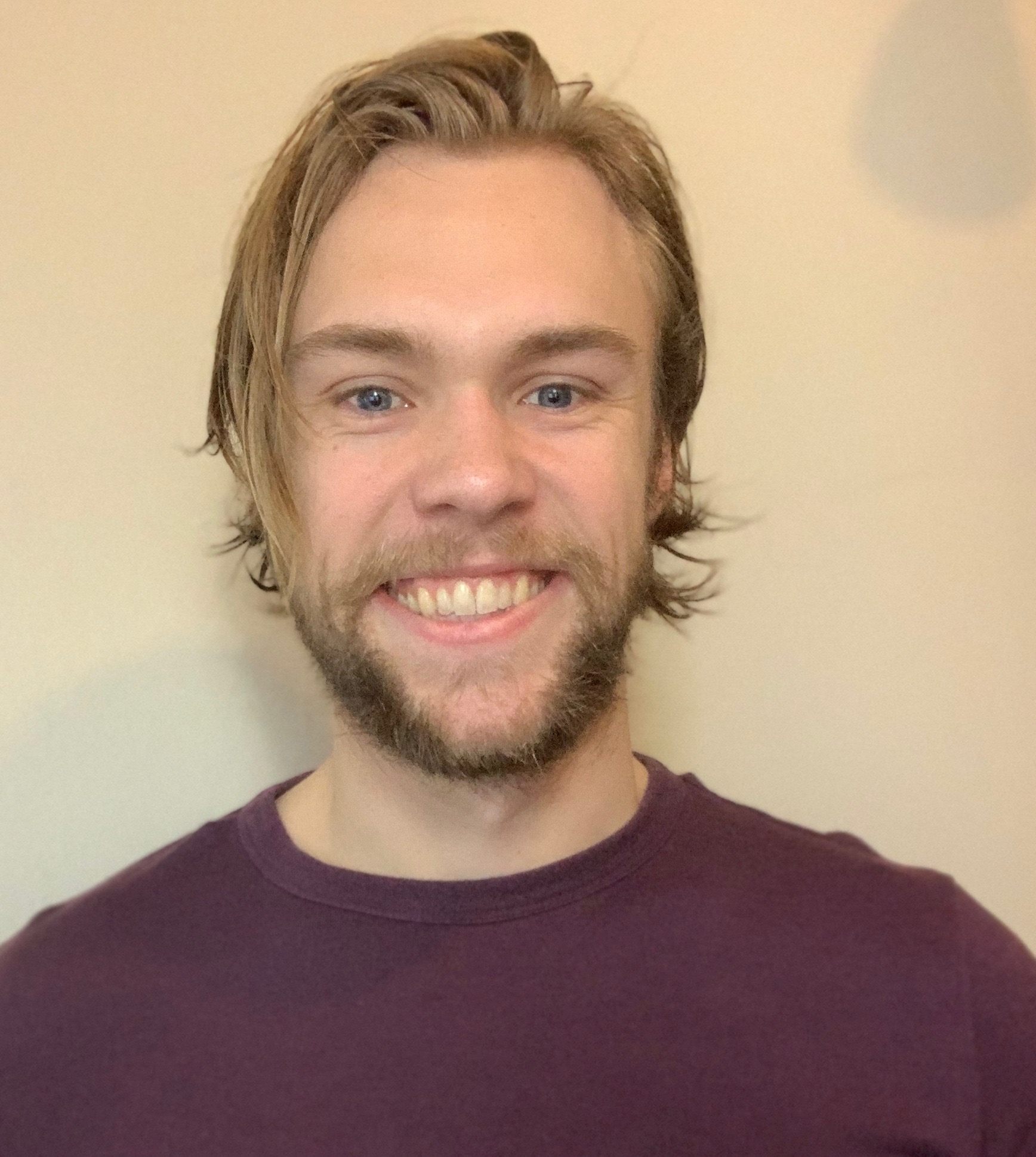
Ryan McKeown
PhD Adviser: Erik Andersen
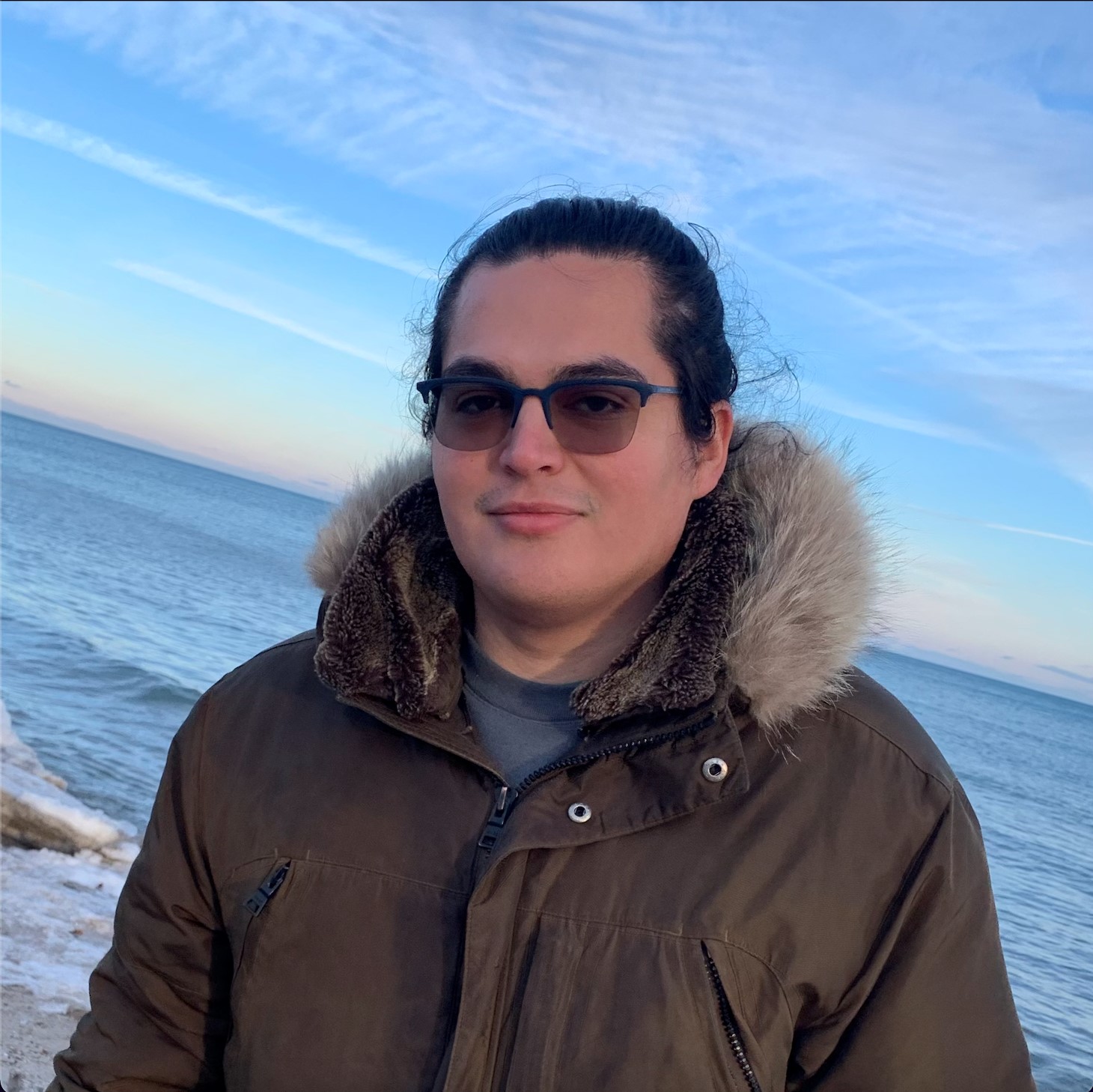
Tonatiuh Ocampo
PhD Adviser: Chad Mirkin

Claudia Oropeza
PhD Adviser: Egon Ozer
Doctoral Research Project: Infections with the gram-negative bacteria Pseudomonas aeruginosa (PA) are increasingly difficult to treat due to antibiotic resistance. A major concern is the lack of new antibiotic treatments for resistant infections. The goal of my PhD thesis in the laboratory of Dr. Egon Ozer is to identify novel antibiotic resistance mechanisms in PA by utilizing state-of the art machine learning approach based on whole genome sequencing (WGS) and transposon insertion sequencing (INseq). We aim to elucidate novel antibiotic resistance factors in drug-insensitive clinical isolates by identifying the involved genes and pathways that might subsequently be targeted for the development of novel antimicrobial therapeutics.
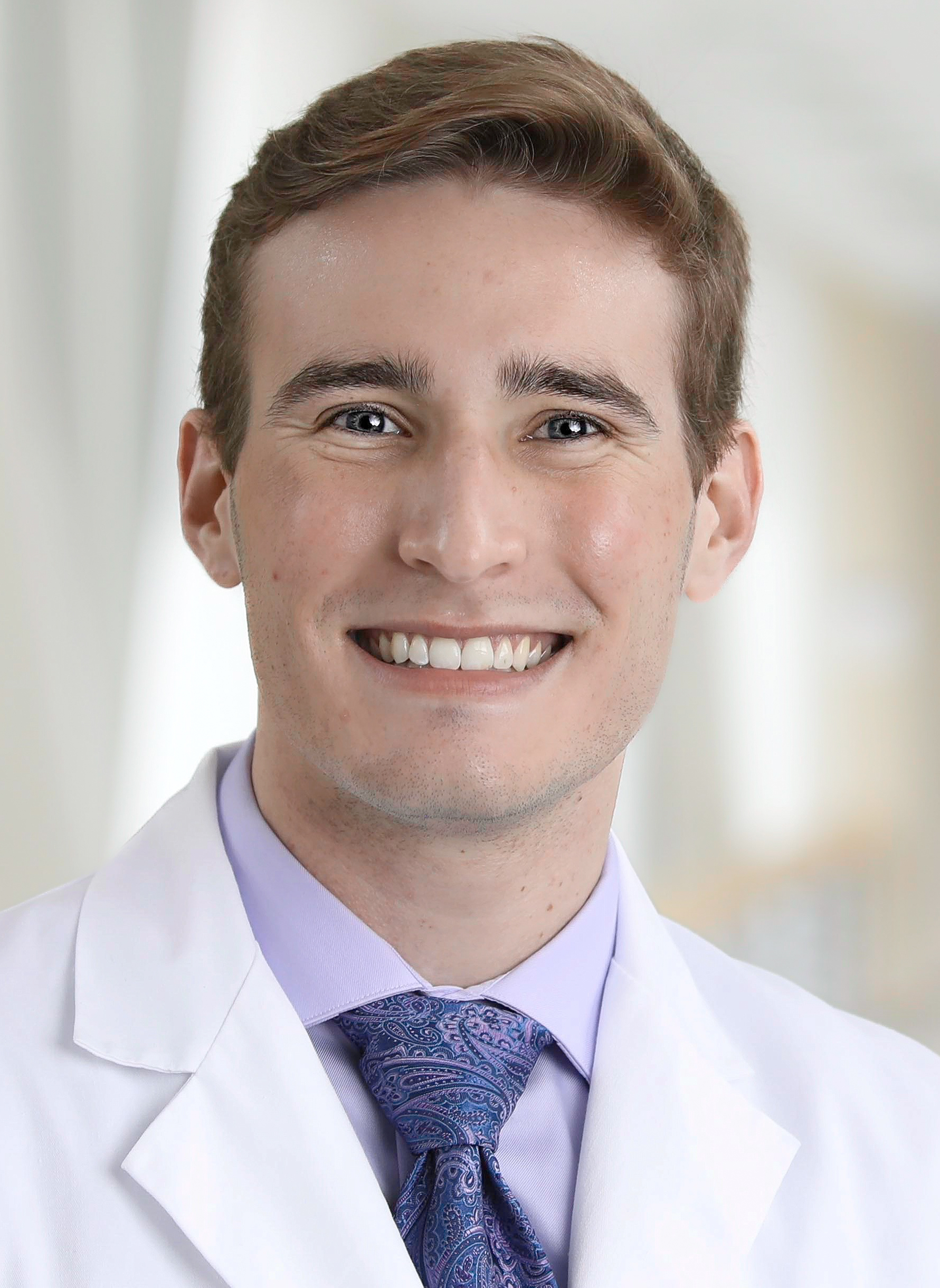
Yannick Schreiber
PhD Adviser: Josh Leonard

Jordan Summers
PhD Adviser: Danielle Tullman-Ercek
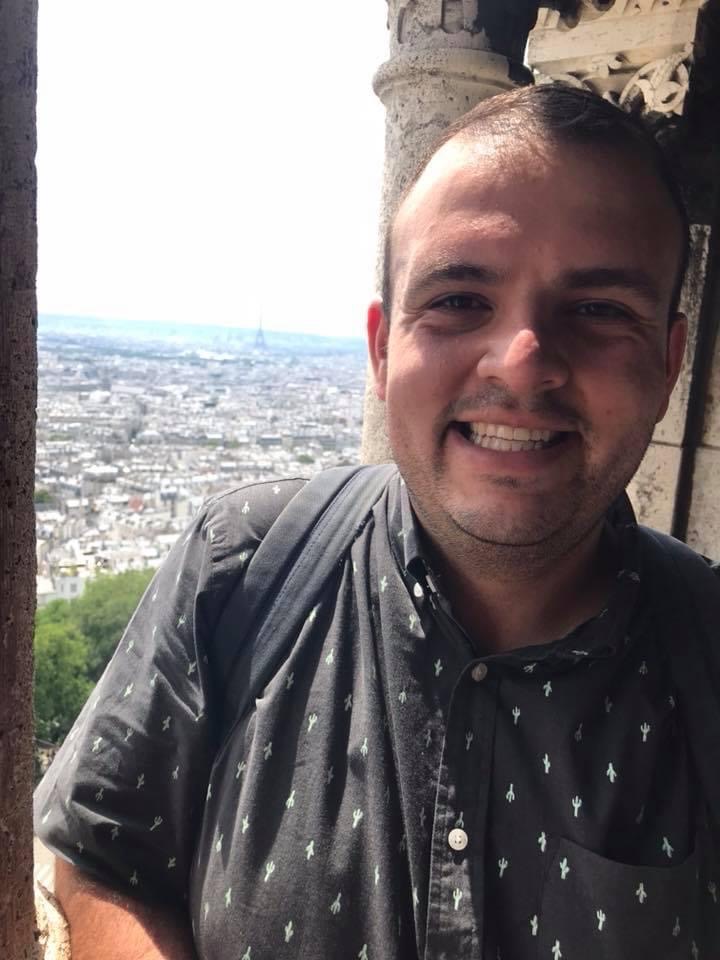
Kevin Vasquez
PhD Adviser: Daniel Arango
Doctoral Research Project: Protein synthesis is the mechanism by which the information carried by messenger RNA (mRNA) is translated into functional proteins. Though translation is a tightly-regulated process, it is commonly dysregulated in cancers. Cancer cells often readapt to adverse conditions such as anti-tumor therapies by aberrantly initiating translation in cancer-driver genes. Notably, cancer-driver genes harbor alternative translation initiation sites that result in protein isoforms with oncogenic or tumor suppressor activity. Thus, targeting oncogenic-specific initiation sites while preserving tumor suppressor activity is a potential avenue for cancer treatment. I aim to understand how epitranscriptomic modifications can be leveraged to guide and reprogram translation. We hope to provide a basis for mRNA epitranscriptomic strategies to sensitize cancers to anti-tumor therpies.
2021 Trainees

Brooke Angell
PhD Adviser: Jason Brickner

Anika Marand
PhD Adviser: Keara Lane
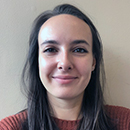
Roxi Mitrut
PhD Adviser: Josh Leonard

Erica Rosario
PhD Adviser: Laura Lackner
Doctoral Research Project: Cell compartmentalization allows organelles to efficiently perform distinct functions. Interestingly, studies have shown that sites of contact between organelles contribute to organelle function and are important for cell survival. These sites, known as membrane contact sites (MCSs), facilitate interorganelle communication and coordinated function. A common characteristic of many contacts is the use of proteins to bridge the membranes of different organelles. The influence of membrane mechanics on the association and insertion of membrane proteins at contact sites and, consequently, the formation and function of the contact site is poorly understood.The goal of my project is to use synthetic biology approaches both in-vitro and in in-vivo to investigate the relationship between membrane mechanics and the proper association and insertion of membrane proteins vital for MCS formation and function.One in-vitro approach will be the development of a minimal system to examine MCS protein-membrane interactions.An in-vivo approach will be the isolation of MCSs from cells and examining the properties of contact site lipids. The work proposed will help to better understand MCS biogenesis,which will improve our ability to efficiently manipulate and control biological systems.
2020 Trainees

William Corcoran
PhD Adviser: Josh Leonard
Doctoral Research Project: Cell-based therapeutics are a burgeoning technology within the biotechnology and medical fields, with their potential demonstrated by the success of chimeric antigen receptor (CAR) T-cell therapies to treat cancers of the blood. However, the expansion of cell-based therapeutics to treat solid tumors remains a significant challenge and may rely upon further development synthetic receptors to control activation of an immune response to exclusively the site of the tumor. To meet this need, my research within both the Rocklin and Leonard labs seeks to intertwine de novo protein design with receptor engineering to construct synthetic receptors capable of sensing soluble ligands that are highly upregulated at the site of the tumor, directing cells to deliver a specific and customizable response.
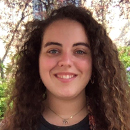
Laura Hertz
PhD Adviser: Julius Lucks
Doctoral Research Project: Developing biotechnologies allow for improved ways to address public health concerns, such as high levels of fluoride in drinking water. Previously, the Lucks lab developed a rapid and easy-to-use fluoride biosensor using a cell-free gene expression platform. The platform senses fluoride through a structured non-coding RNA, called a riboswitch, that turns transcription on or off in the respective presence or absence of fluoride. Specific structural features of the fluoride riboswitch are poorly understood, which hinders our ability to optimize its performance. As such, I am studying several of its critical structural features through systematic RNA sequence variation.
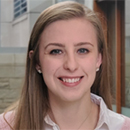
Rebecca Keate
PhD Adviser: Guillermo Ameer

Nicolas Moya
PhD Adviser: Erik Andersen
Doctoral Research Project: Human genetics is focused on the identification of genetic variants that underlie complex disease. Short-read sequencing has been crucial for furthering our understanding of genetics. However, due to the fragmented nature of these data, most large-scale structural variation remains hidden. Recent advances in long-read sequencing technologies allow us to generate high-quality reference genomes and build full-length RNA transcripts. My research in the Andersen Lab is focused on characterizing gene and genome structure in individual genomes of Caenorhabditis species with the aim to uncover hidden genetic variation. I will develop methodologies for accurate and sensitive gene prediction to study genetic differences that underlie complex traits.

Reyvin Reyes
PhD Adviser: Amy Rosenzweig
Doctoral Research Project: Metals play a vital role in many biological processes, especially in bacteria such as methanotrophs. In these organisms, copper is used to regulate and produce an enzyme called methane monooxygenase which catalyzes the oxidation of methane as the first step in their metabolic pathway. In copper-starved conditions, methanotrophs release and uptake methanobactin, a ribosomally-synthesized and post-translationally modified peptide (RiPP), that have high affinity for copper. Currently, the identity of certain enzymes and mechanisms involved in its biosynthesis are unknown. My studies will further elucidate the biosynthesis of methanobactin through enzymatic studies using structural and biochemical techniques like X-ray crystallography and mutagenesis. In addition, I am designing heterologous methods of expressing methanobactin such as in vivo expression in E.coli and cell-free expression as the mature RiPP has not been successfully synthesized outside of the native organism. These studies can aid in large scale production and engineering efforts of this peptide, which have promising applications as treatment for disorders involving copper metabolism such as Wilson's disease.
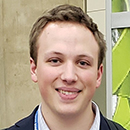
Reese Richardson
PhD Adviser: Luis Amaral
Doctoral Research Project: RNA sequencing (RNA-seq) has been the premier transcriptomic technology of the last decade and has arguably revolutionized biomedical research. However, research from our laboratory and others has demonstrated that the analytical results of RNA-seq studies are highly sensitive to a user’s choice of tools and parameters in the analysis pipeline. This inconsistency has been identified as a major obstacle for the adoption of RNA-seq in diagnostic tests. In my research, I am working towards better characterization of the limits of computational reproducibility in bioinformatics and biases inherent to RNA-seq analysis pipelines. I hope to better elucidate the effects of experimental choices on reproducibility, as well as develop methods for processing RNA-seq data for counteracting these limits.
2019 Trainees
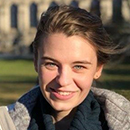
Erika Arvay
PhD Adviser: Keith Tyo
Doctoral Research Project: Lignin, a complex biopolymer which comprises 20 to 30% of plant biomass, is produced as waste at a scale of 50 million tons annually. As an energy dense carbon source, it represents a promising substrate for biological transformations. However, because of its high aromatic content and complex structure, model organisms such as Escherichia coli and Saccharomyces cerevisiae are unable to utilize it, most lignin is burned as fuel. Acinetobacter baylyi ADP1 is an emerging model organism that natively degrades aromatic compounds commonly found in lignin. My work focuses on engineering this bacterium towards the production of terpenoid precursors from lignin-derived carbon sources as well as developing strategies to more effectively engineer ADP1’s metabolism.

Jonathan Boucher
PhD Adviser: Josh Leonard
Doctoral Research Project: Developing new therapies is very expensive and many fail due to ineffectiveness or side effects. Given the reinvigorated interest in gene therapies, a method to effectively and specifically deliver such therapeutics, and thus minimize side effects, is necessary to bring these promising technologies into use. Extracellular vesicles (EVs) offer a promising vehicle to deliver therapeutics to specific cells. However, there currently exists no clinically translatable method for tracking EV-mediated delivery in vivo. I am working on integrating EV targeting technology with bio-activated magnetic resonance contrast agents to track and deliver gene therapies to specific cells in a way that is directly translatable to clinical settings.

Slava Butkovich
PhD Advisor: Neda Bagheri
Doctoral Research Project: Magnetic resonance imaging (MRI) is a technique often used in medical diagnostics. Recent studies have suggested that MRI capabilities can be used to identify and quantify key chemical species in the brain. I am working to further expand MRI capabilities with other tissues of interest. I utilize machine learning techniques in combination with MRI data to allow for multiplexed imaging against varied tissue backgrounds.
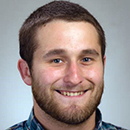
Clayton Dilks
PhD Adviser: Erik Andersen
Doctoral Research Project: Anthelmintic drug resistance has become increasingly prevalent in recent years. This resistance caused treatments of human and livestock parasites to become less effective. An essential step towards combatting this growing resistance is to understand how it appears and what genes are responsible. My research in the Andersen lab is focused on determining the genes responsible for resistance and then studying the mechanisms by which alterations to these genes convey resistance in the model organism Caenorhabditis elegans. I will utilize genome-wide association studies across a large collection of wild strains to identify genes highly associated with resistance. Once identified, follow up experiments will be used to identify the mechanisms of resistance.
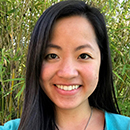
Tracey Dinh
PhD Adviser: Keith Tyo

Emily Pujadas
PhD Adviser: Vadim Backman
Doctoral Research Project: Early carcinogenesis is marked by nanoscale alterations to chromatin structure, concomitant with an increase in transcriptional heterogeneity of tumor cell populations. This tumor heterogeneity has been linked to the development of chemoevasion mechanisms by increasing the adaptive potential of cancer cells. However, the physical forces modulating chromatin structure and function, and their relation to carcinogenesis and chemoresistance, are not fully understood. The goal of my project is to uncover mechanisms that link global transcriptional patterns and chromatin organization to the adaptability of cancer cells in response to cytotoxic chemotherapies. Specifically, I aim to design and explore physiochemical regulators that target channels and transporters that regulate the nuclear nanoenvironment, including ions and pH, thus reversibly manipulating global chromatin organization to decrease heterogeneity on a whole nuclear scale. Furthermore, my work will involve genetic manipulation techniques to modulate chromatin organization in combination with methods that study the effect of this manipulation on chromatin structure, including nanoimaging systems such as Partial Wave Spectroscopic microscopy, and molecular biology methods such as chromosome conformation capture.
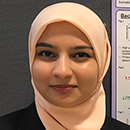
Zohra Sattar
PhD Adviser: Thomas O'Halloran
Doctoral Research Project: Zohra Sattar (Waxali) is a chemistry graduate student in Dr. Thomas O'Halloran's lab. She earned her bachelor's degree in chemistry and biochemistry at Northern Illinois University, where her medicinal chemistry research focused on computational drug design and synthesis of malarial enzyme inhibitors and natural product extraction from traditional medicinal Kenyan plants. Zohra is currently studying the cardiomyocyte metallome and its impact on heart disease, the breast cancer metallome, and inorganic anticancer drugs.
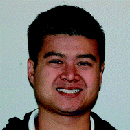
Timothy Vu
PhD Adviser: Neha Kamat
Doctoral Research Project: Lipid vesicles are good mimics of the cell membrane and have extensively been used for drug delivery systems, but engineering functionality to create true cell mimetic systems is a challenge. My research focuses on creating stimuli-responsive vesicles and their application to create better drug carriers. I am collaborating with the Mrksich lab to create protein-lipid conjugates to incorporate into vesicles for cell targeting. These vesicles will be engineered to react to physical and chemical stimuli received from target cells and release signals back to the target cells, creating synthetic cellular communication systems. The goal is to apply these vesicles to release chemotherapy drugs against cancer cells or immune adjuvants to modulate immune response.
2018 Trainees

Jason Cain
2017 BS, Chemical Engineering, Northeastern University
PhD Adviser: Neda Bagheri
Doctoral Research Project: A person’s genetic make-up is governed not only by an individual’s DNA, but also by the DNA of the trillions of bacteria living within and on them. The bacteria living in the colon have a particularly strong influence on human health, as these organisms directly and indirectly access many systems in the body, such as the immune and nervous systems. I use agent-based modeling approaches to elucidate both the host and bacterial physical properties that govern gut colonization. Specifically, my work focuses on understanding subcellular metabolism and signaling network properties that support population-level fitness of microbes in a host-mediated microenvironment.
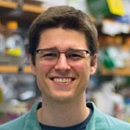
Samuel Gowland
PhD Adviser: Michael Jewett
Doctoral Research Project: Translation represents one of the most impactful molecular processes in nature. The proteins produced by translation are a powerful class of effector molecules and are responsible for an incredible breadth of biological function. My work aims to engineer the ribosome and the process of translation. I am currently developing specialized strains of E. coli in which a population of ribosomes is freed from the translational burden of the cell. This will allow us to employ powerful selection approaches to evolve ribosomes toward specialized engineering functions, such as allowing the incorporation of non-traditional monomers into sequence-defined polymers. I hope to use these systems to improve the versatility and efficiency of recombinant protein production, ultimately enabling the manufacture of new classes of catalysts, materials, and medicines.
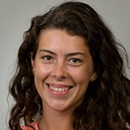
Clare Harper
PhD Adviser: Laura Lackner
Doctoral Research Project: Organelles perform distinct, essential functions in the cell, and while once thought to operate independently, it is increasingly clear that membrane contact sites (MCSs) are critical for organelle function and overall cellular homeostasis. I am working to develop biotechnology tools to further understand the function of the S. cerevisiae protein Num1, the core component of the mitochondria-ER-cortex contact site (MECA), as well as explore the role of MECA and other MCSs in cellular fitness. The central hypothesis is that Num1 not only drives the formation of MECA and impacts mitochondrial distribution, but also facilitates mitochondrial and cellular functions. Synthetic organelle tethers engineered using known interaction domains coupled with dimerization systems, such as GFP-aGFP nanobody targeting and light inducible dimerization, will be used to explore how MCSs and their protein components influence overall cellular fitness, especially in stress conditions.

Sophia Li
PhD Adviser: Evan Scott
Doctoral Research Project: The current standard of treatment for Human Immunodeficiency Virus (HIV-1) infection is highly active antiretroviral therapy (HAART). While HAART is effective in suppressing HIV-1 replication, it is unable to eradicate latent and residual reservoirs of the virus, requiring daily treatment for life. To address this, I am working on better understanding the design principles necessary to enhance intracellular delivery of polymeric nanocarriers into T cells that are latently infected by HIV-1. Using these design principles, I will engineer nanocarriers that can deliver a latency reversing agent for a sustained time period to the latent reservoir. The latency reversing agent reactivates HIV-1 so that the immune system can now detect and “purge” these infected cells while the patient is on HAART. If successful, this research will advance the development of clinically relevant nanocarriers that can be used as novel immunotherapies for eradication of the HIV reservoir and thereby provide a functional cure.
2017 Trainees
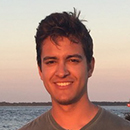
Alec Castinado
2016 BS Molecular Biology, Auburn University
PhD Adviser: Keith Tyo
Doctoral Research Project: As interest and research surrounding the unprecedented data-storage potential of DNA continue, engineered DNA polymerases are poised to be a natural companion technology. I am working toward the realization of polymerase-based tools capable of encoding a record of changing intracellular conditions over time in a DNA template, allowing complex biological systems to collect data on themselves without excessive interference from external influences. Specifically, these tools are being developed with the goal of recording functional connectivity in the mammalian brain at single-cell resolution. By developing novel assays for polymerase function, I am expanding the accessibility of DNA polymerases to high-throughput protein engineering techniques with the expectation that these techniques, in concert with computational protein design tools, will produce novel polymerase functionalities that facilitate the real-time encoding of information in DNA.
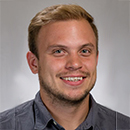
Nolan Kennedy
2017 BS Biology, University of Minnesota - Twin Cities
PhD Adviser: Danielle Tullman-Ercek
Doctoral Research Project: Bacterial microcompartments are proteinaceous subcellular organelles that are utilized by numerous prokaryotes as a means of either increasing enzymatic efficiency or sequestering harmful intermediates in specialized metabolic pathways. These compartments are composed of thousands of small self-assembling protein subunits of multiple types. Specifically, my work focuses on the 1,2-propanediol utilization microcompartment found in Salmonella typhimurium. My work will look at how the proteins forming these unique organelles assemble into larger structures, such as rods, sheets, or complete compartments. Once the rules governing the assembly of these structures are elucidated, we hope to utilize them to create designer protein structures for scaffolding or drug delivery.

Sara Rigney
2011 BS Biochemistry, Sonoma State University
PhD Adviser: Carole LaBonne
Doctoral Research Project: Vertebrate development is a progressively restrictive process in which initially pluripotent cells capable of giving rise to all cell types become lineage restricted to specific fates. While pluripotency in most embryonic cells is transient, an exception lies in the neural crest cells, which maintain their differential potential late into development. Neural crest cells give rise to a diverse population of cells that contribute to the vertebrate body plan, and their defects are linked to many forms birth defects and cancer. In the LaBonne lab we utilize neural crest cells as a model to study the mechanistic controls of signaling pathways, transcription factors and epigenetic modifiers on pluripotency and lineage restriction. My project is currently focused on developing powerful fluorescent imaging assays in both live and fixed Xenopus laevis embryos that will allow us to visualize and quantify the changes in gene activity at a single-cell resolution throughout embryogenesis, in order to understand how seemingly random cell to cell differences drive the restrictive developmental decision making of the embryo.

Matthew Robey
2013 BS Biochemistry and Molecular Biology
PhD Adviser: Neil Kelleher
Doctoral Research Project: Modern medicine relies heavily on microbial natural products with diverse structures and a wide range of pharmacological activities. With the advent of affordable and accessible genome sequencing, it has become apparent that an extraordinary wealth of bioactive natural products awaits discovery. The main goal of my research is to establish a cell-free protein synthesis-based system for reconstitution of natural product biosynthetic pathways, a system greatly enabled by high resolution LC-MS proteomics and metabolomics detection. This platform will allow for natural product discovery, pathway prototyping, and mechanistic studies of biosynthetic enzymes.

Adam Silverman
2016 BS Chemical and Biomolecular Engineering (Biotechnology Concentration), Georgia Institute of Technology
PhD Advisers: Julius Lucks and Michael Jewett
Doctoral Research Project: In the Lucks and Jewett labs, I am working on a project to engineer riboswitches, RNA-based biosensors, for the detection of both cellular and xenobiotic ligands in cell-free environments. Compared to traditional chemical sensors or cellular biosensors, cell-free biosensors are easier to test, respond more quickly, and can sense a wider array of compounds that may be toxic or impermeable to cells. By using RNA to detect target ligands, we can leverage structure-guided approaches that map transcript folding pathways towards the rational design of new riboswitch variants. I am also working on developing a cell-free protein synthesis platform optimized for rapid ligand detection which would be thermostable and field-deployable.
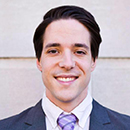
Jonathan Strutz
2015 BS Chemical and Biomolecular Engineering, Ohio State University
PhD Advisers: Linda Broadbelt and Keith Tyo
Doctoral Research Project: Lignin, a plant-based polymer, is currently a waste product, but it shows promise as a feedstock for pharmaceutical production. However, because of the diversity of chemical linkages within lignin, its depolymerization results in a diverse soup of aromatic monomers and oligomers, requiring costly separation methods to purify valuable components. To overcome this limitation, my research focuses on funneling this diverse mixture of aromatics into the metabolism of an aromatic-degrading organism, Acinetobacter baylyi ADP1. However, ADP1 comes with its own engineering challenges, including complex regulatory effects. To overcome these challenges, I am developing a kinetic model of ADP1 metabolism. The model will be used to infer unknown regulatory effects, identify metabolic bottlenecks and strategies for overcoming complex regulation, and simulate production of target molecules. Hopefully, this will allow us to intelligently engineer a strain that can utilize lignin in the production of life-saving small-molecule drugs.
2016 Trainees

Bradley Biggs
2012 BS Chemical Engineering, University of Southern California
PhD Adviser: Keith Tyo
Doctoral Research Project: I work in the laboratory of Prof. Keith Tyo in Chemical and Biological Engineering. My research focuses on protein engineering within the context of whole cells. This comes predominantly in the form of the introduction of new chemical functionality by way of novel ligand binding domains or protein-protein interactions for the output of either chemical signal transduction or chemical synthesis. To accomplish these output goals, I care about the free energy of each protein fold, using computational approaches to evaluate this parameter, and appreciate both promiscuous enzyme functionality and specific cell contexts (E. coli, S. cerevisiae, etc.).

Evan Buechel
2015 BS Biochemistry, University of Wisconsin-Madison
PhD Adviser: Heather Pinkett
Doctoral Research Project: The multiple drug resistance phenomenon that occurs in bacterial and fungal infections, as well as human cancer, is primarily the result of the upregulation of a set of ABC transporters that are capable of exporting a wide range of xenobiotics. In S. cerevisiae, the master regulator of this set of ABC transporters is the transcription factor Pdr1p, which has homologs in humans and in bacteria. Currently, it is known that Pdr1p is capable of binding xenobiotics, and what DNA sequences it binds to. Through structural and biochemical studies, I will answer how Pdr1p binds xenobiotics and identify what conformational changes it undergoes to upregulate transcription.

Janel Davis
2014 BS Biomedical Engineering, University of Texas at Austin
PhD Adviser: Hao F. Zhang
Doctoral Research Project: Recent advances in super resolution imaging techniques have presented the opportunity to investigate new detection and diagnosis methods. Working with collaborators, the Zhang lab has developed a spectroscopic photon localization microscopy (SPLM) platform. SPLM utilizes extrinsic emission to locate and detect spectral signatures with high spatial and spectral resolution. My research will use bacterial drug resistance as a model to demonstrate how this nanoscopic imaging platform can be used to detect and study nucleic acids. This technology has the potential to have many applications in the discovery, detection and characterization of numerous diseases. Additionally, the improved resolution is ideal for studying the process of gene expression which will allow us to better understand how pathogens become drug resistant and virulent.

Sophia Liu
2014 BS Chemistry, National Tsing Hua University
PhD Adviser: Luis Amaral
Doctoral Research Project: Metagenomic data from microbiomes are a treasure trove of data that have widespread applications in biotechnology, human health, and environmental protection. With current sequence analysis techniques, we are still unable to identify the majority of the sequences in these datasets. I propose that we can use ancestral genome reconstruction as a method to increase gene identification in these datasets, in order to mine for genes that can be engineered for biotechnological and biomedical applications.
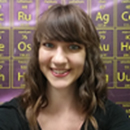
Rebecca Sponenburg
2014 BS Chemistry, Gettysburg College
2014 BS Philosophy, Gettysburg College
PhD Adviser: Thomas Meade
Doctoral Research Project:
In the Meade lab, I work on the design of cobalt(III) Schiff-base complexes for protein inhibition. Previous complexes in our lab have demonstrated inhibition of α-thrombin via coordination to histidine residues in a pro-drug type strategy, but there are still many synthetic factors which must be addressed to make these complexes relevant for bio-medical applications. My project seeks to fill this need by designing and synthesizing a series of electron donor species which are light-activated by near-infrared wavelengths and achieve efficient electron transfer. Not only would this provide essential information about the electron transfer process in molecules of this type, but the finished agent will be able to be tested in-vivo for bio-compatibility.
2015 Trainees

Shannon Brady
2014 BA Biology, University of Kentucky
PhD Adviser: Erik Andersen
Doctoral Research Project: Many traits that were once believed to act in a simple Mendelian nature have been determined to be much more complex. Some complex traits that are of interest to the medical field are disease susceptibility and drug sensitivity in humans. My work in the Andersen lab focuses on correlating genetic variants to variation in drug response in Caenorhabditis elegans. Specifically, I will focus on understanding variation in sensitivity to bleomycin, a chemotherapeutic drug that results in highly variable efficacy and toxicity in human cancer patients.

Suvai Gunasekaran
2013 BA Biomedical Engineering, Harvard University
2013 MS Bioengineering, Harvard University
PhD Adviser: Daniel Kim
Doctoral Research Project: Atrial fibrillation (AF) is the most common cardiac arrhythmia affecting over 3 million people in the US. Consequences of untreated AF include stroke and heart failure due to left ventricular (LV) dysfunction. The optimal method to treat AF is restoration of sinus rhythm through the use of anti-arrhythmic drugs or catheter ablation. However, the degree of LV functional improvement after restoration of sinus rhythm is inversely correlated with pre-existing diffuse LV fibrosis burden. In our lab we are developing a novel MRI method to non-invasively measure cardiac fibrosis in patients with arrhythmia. I hope to determine if this method can predict LV functional recovery after treatment of AF and thus be used improve patient outcomes.

Do Soon Kim
2014 BS Chemical Egineering, The University of Texas-Austin
PhD Advisor: Mike Jewett
Doctoral Research Project: In the Jewett Lab, I am using oRibo-T, a recently developed synthetic ribosome with tethered subunits to promote production of novel biomolecules. Specifically, I will be focusing on engineering the ribosome's peptidyltransferase center (PTC) to promote new chemistries beyond the conventional alpha-peptide bond formation currently observed in wild-type ribosomes. The ability for the ribosome to accommodate unnatural monomers beyond the standard 20 amino acids as well as the ability to catalyzenew chemical bonds in its catalytic PTC would redefine the ribosome as a general polymerizing biomachine, opening up possibilities in the production of sequence-defined polymers with applications in therapeutics and biomaterials previously unobtainable.

Andres Martinez
2014 BS Chemical Engineering, Purdue University
PhD Adviser: William Miller
Doctoral Research Project: My research focuses on studying ex-vivo platelet production from megakaryocytes by utilizing microfluidic bioreactors. The three aspects of the research include computational fluid dynamics modeling of bioreactors to understand the shear and velocity profiles generated ex-vivo so as to match the vasculature profiles experienced in vivo. The second aspect of the research includes fabricating and testing the bioreactors using live imaging microscopy to understand the platelet formation by analyzing release kinetics. Third, by probing the cytoskeletal rearrangement that occurs inside the megakaryocytes during platelet formation with the use of inhibitors of RhoA, Rac1 and Cdc42 GTPases, I hope to elucidate a novel mechanism of platelet formation and further integrate that into our bioreactors to study these inhibited cells under flow conditions.

Jimmy Su
2013 BS Biomedical Engineering, The Johns Hopkins University
PhD Adviser: Ramille N. Shah and Jason Wertheim
Doctoral Research Project: The kidney glomerulus is the initial site of fluid filtration of the nephron. Development and maintenance of the glomerular filtration barrier (GFB) relies upon specific interaction between endothelial cells and podocytes. The objective of my project is to elucidate how defined biochemical and structural boundaries within the extracellular matrix proteins (ECM) of the glomerular basement membrane (GBM) can direct podocyte and endothelial cell interactions to help understand regenerative processes within the glomerulus and develop new strategies for renal engineering and recovery of function. To investigate the importance of biochemical boundaries, I will decellularize kidneys from transgenic mice that exhibit conditional knockdown and knockout of vascular endothelial growth factor (VEGF) expression in podocytes and use the isolated ECM scaffold with altered VEGF retention levels for cell culture. To investigate the importance of structural boundaries, I will develop hydrogels and printable bioinks from isolated renal ECM to allow precise control and organization of fabricated scaffolds and printed cells using a 3D bioplotter.
